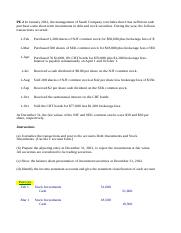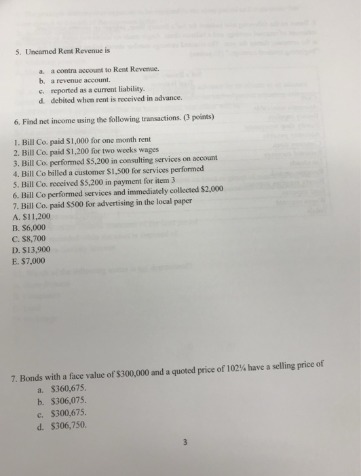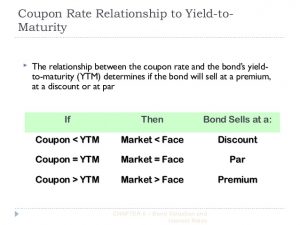
These reconciliations can be performed in several ways, depending on the context. The rules vary depending on whether the thief used just your account number or your physical ATM or debit card. In the first instance, you aren’t responsible for any transactions you didn’t authorize as long as you report them within 60 calendar days after your statement was sent to you. Accuracy and completeness are the two most important things when reconciling accounts. Additionally, reconciling accounts on time consistently is also essential.

What are the two basic methods of account reconciliation?
Accounts payable reconciliation makes sure that general ledger balances match those in underlying subsidiary journals. It adheres to accrual accounting principles and reconciles balances for credit card statements to the appropriate payables account. In most cases, account reconciliations are performed against the general ledger. accounts expenses This is because the general ledger is considered the master source of financial records for the business. By performing reconciliations against the general ledger, the company can ensure that its financial records are accurate and up-to-date. The account reconciliation process can involve several financial accounts.
- Accounts payable reconciliation makes sure that general ledger balances match those in underlying subsidiary journals.
- The risk of duplicate payments is a constant concern in manual reconciliation.
- Verify that all purchase transactions are authorized and processed correctly.
- It’s a statistical approach that helps identify whether discrepancies between accounts result from human error or potential theft.
- Here are some key factors to consider when researching and choosing the best accounting software for your small business.
How Account Reconciliation Works (Reconciliation Process)
Here, they’d match records like receipts or cheques with entries in the general ledger. This is a bit like carrying out a personal accounting reconciliation using credit card receipts and a statement. Check that all incoming funds have been reflected in both your internal records and your bank account. Find any deposits and account credits that haven’t yet been recorded by the bank and add these to the statement balance. If the bank shows money deposits not reflected in your internal books, make the entries. If you have an interest-bearing account and you are reconciling a few weeks after the statement date, you may need to add interest as well.

Actual customer credit balance is lesser than accounted for
It also enables you to monitor cash flow and control the potential for theft. Budget controllers can keep a tight leash on spending through this match-making exercise. They’ll check that the invoices your company must pay mirror the goods or services you took delivery of.
What is a three-way reconciliation?

This card offers a 1% cashback on all purchases, without any limits or specific categories. This credit card aimed at small business owners offers unlimited rewards and a $750 welcome bonus if you meet spending requirements. A premium business travel card offering high reward rates on travel purchases and access to luxury travel benefits.
How Often Should a Business Reconcile Its Accounts?
Account reconciliation is a vital process that helps businesses maintain their financial health by identifying errors, preventing fraud, and ensuring the validity and accuracy of all financial statements. For example, when performing bank reconciliation, a business compares its financial statements with the records received from the bank. This helps identify timing delays in deposits, payments, fees, and interest that may have been recorded by one entity https://www.business-accounting.net/how-to-handle-sales-commissions-in-financial/ but not the other. Accounts receivable is the amount that your customers owe you for the goods sold or services provided. You will need to give special importance to reconciling accounts receivables to ensure steady cash flow and good customer relations to name just a few reasons. You will need to check the bank and ledger balances to ensure that there are no short payments, deductions, disputes, and to stop credit facility for defaulting customers.
Our partners cannot pay us to guarantee favorable reviews of their products or services. We believe everyone should be able to make financial decisions with confidence. Give your accountant direct access to your books so she can find the reports and information she needs when questions arise. Create a separate login for your accountant to make it easy for her to work with you. You can exchange messages and share documents directly inside QuickBooks, too. There are several reports – such as the The Reconciliation Discrepancy Report, the Missing Checks Report, and the Transaction Detail Report – that can help you identify discrepancies quickly.

Again, the left (debit) and right (credit) sides of the journal entry should agree, reconciling to zero. After finding evidence for all differences between the bank statement and the cash book, the balances in both records should be equal. You should prepare a bank reconciliation statement that explains the difference between the company’s internal records and the bank account. For lawyers, reconciliation in accounting is essential for ensuring that financial records are accurate, consistent, and transparent.
In the following post, we’ll cover the crucial types of reconciliation for legal professionals and delve into the fundamentals of three-way reconciliation accounting. Plus, we’ll offer useful best practices for reconciliation in accounting for lawyers to help make the process easier, more effective, and more efficient. Other features include inventory tracking, reporting, invoicing, project management tools and the ability to categorize transactions using classes. With QuickBooks Enterprise, business owners can set up volume discounts and customize pricing rules according to sales rep, item category or customer in the Platinum plan and up.
While proper reconciliation is the standard for how law firms should handle all financial accounts, it is particularly important—and often required—for the management of trust accounts. Performing account reconciliation is crucial for businesses to avoid errors in their financial records and to prevent potential issues during audits. Most companies prefer to reconcile their accounts monthly after closing their financial books. In the double-entry accounting process, all transactions get posted as both debits and credits. Individuals could also use the process to verify the accuracy of their banking and credit card accounts. The reconciliation process includes reconciling your bank account statements, but it also includes a review of other accounts and transactions that need to be completed regularly.
It also helps to flag any discrepancies, mistakes, or fraud in the company’s books. Any of these could have a serious detrimental impact on the financial health of a company. So, businesses should perform regular check-ups because these can contribute to their success. This generally takes place https://www.business-accounting.net/ at the end of the month as part of the account closing process. This would be immediately before a business puts out its monthly financial statements. When you reconcile accounts, you compare two or more sources of a company’s accounting to check for errors and bring them into agreement.
Account reconciliation is like double-checking the financial books of a business. It involves comparing the company’s official records, like the balance sheet, with supporting documents such as bank statements and transaction details. If the numbers at the end don’t match, accountants dig into the reasons for the differences.
In contrast, a consulting firm may find that monthly reconciliations for invoices and expenses are enough. Meanwhile, a construction company dealing with equipment and material costs may choose quarterly reconciliations to guarantee their financial processes operate smoothly. Similarly, when a business receives an invoice, it credits the amount of the invoice to accounts payable (on the balance sheet) and debits an expense (on the income statement) for the same amount. When the company pays the bill, it debits accounts payable and credits the cash account.
When you compare the two, you can look for any discrepancies in cash flow for a certain time frame. Account reconciliation is done to ensure that account balances are correct at the end of an accounting period. The account reconciliation process also helps to identify any outstanding items that need to be taken into consideration in the reconciliation process.